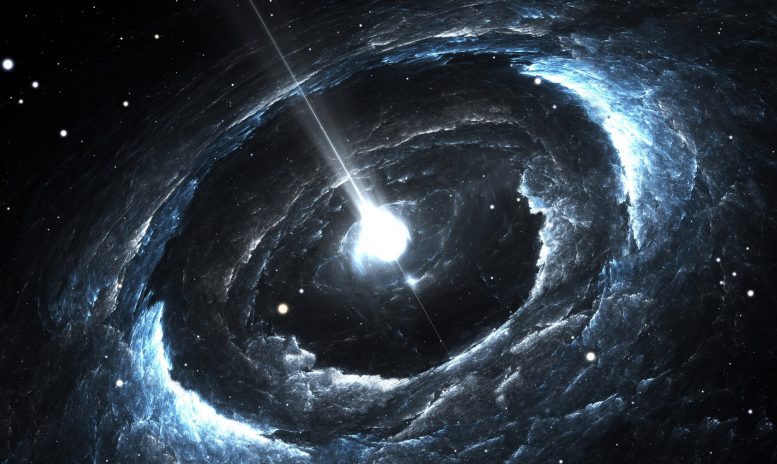
In a paper published today scientists have studied the Vela Pulsar, a neutron star in the southern sky, that is 1,000 light years away.
Neutron stars are not only the densest objects in the Universe, but they rotate very fast and regularly.
Until they don’t.
Occasionally these neutron stars start to spin faster, caused by portions of the inside of the star moving outwards. It’s called a “glitch” and it provides astronomers a brief insight into what lies within these mysterious objects.
A team from Monash University, the ARC Center of Excellence for Gravitational Wave Discovery (OzGrav), McGill University in Canada, and the University of Tasmania, studied the Vela Pulsar, a neutron star in the southern sky, that is 1,000 light years away. They report their findings in a paper published today (August 12, 2019) in the journal, Nature Astronomy.
According to the paper’s first author, Dr. Greg Ashton, from the Monash School of Physics and Astronomy, and a member of OzGrav, Vela is famous — not only because only 5% of pulsars are known to glitch but also because Vela “glitches” about once every three years, making it a favorite of “glitch hunters” like Dr. Ashton and his colleague, Dr. Paul Lasky, also from Monash and OzGrav.
By reanalyzing data from observations of the Vela glitch in 2016 taken by co-author Dr. Jim Palfreyman from the University of Tasmania, Dr. Ashton and his team found that during the glitch the star actually started spinning even faster, before relaxing down to a final state.
According to Dr. Lasky, an ARC Future Fellow also from the Monash School of Physics and Astronomy, and a member of OzGrav this observation (done at the Mount Pleasant Observatory in Tasmania) is particularly important because, for the first time, the scientists got a glimpse into the interior of the star – revealing that the inside of the star actually has three different components.
“One of these components, a soup of superfluid neutrons in the inner layer of the crust, moves outwards first and hits the rigid outer crust of the star causing it to spin up,” Dr. Lasky said.
“But then, a second soup of superfluid that moves in the core catches up to the first causing the spin of the star to slow back down.
This overshoot has been predicted a couple of times in the literature, but this is the first real-time it’s been identified in observations,” he said.
One such prediction of the overshoot came from study co-author Dr. Vanessa Graber from McGill University, who visited the Monash team as an OzGrav international visitor earlier this year.
Another observation, according to Dr. Ashton, defies explanation.
“Immediately before the glitch, we noticed that the star seems to slow down its rotation rate before spinning back up,” Dr. Ashton said.
“We actually have no idea why this is, and it’s the first time it’s ever been seen.
“It could be related to the cause of the glitch, but we’re honestly not sure,” he said adding that he suspects this new paper to inspire some new theories on neutron stars and glitches.
Reference: “Rotational evolution of the Vela pulsar during the 2016 glitch” by Gregory Ashton, Paul D. Lasky, Vanessa Graber and Jim Palfreyman, 12 August 2019, Nature Astronomy.
DOI: 10.1038/s41550-019-0844-6

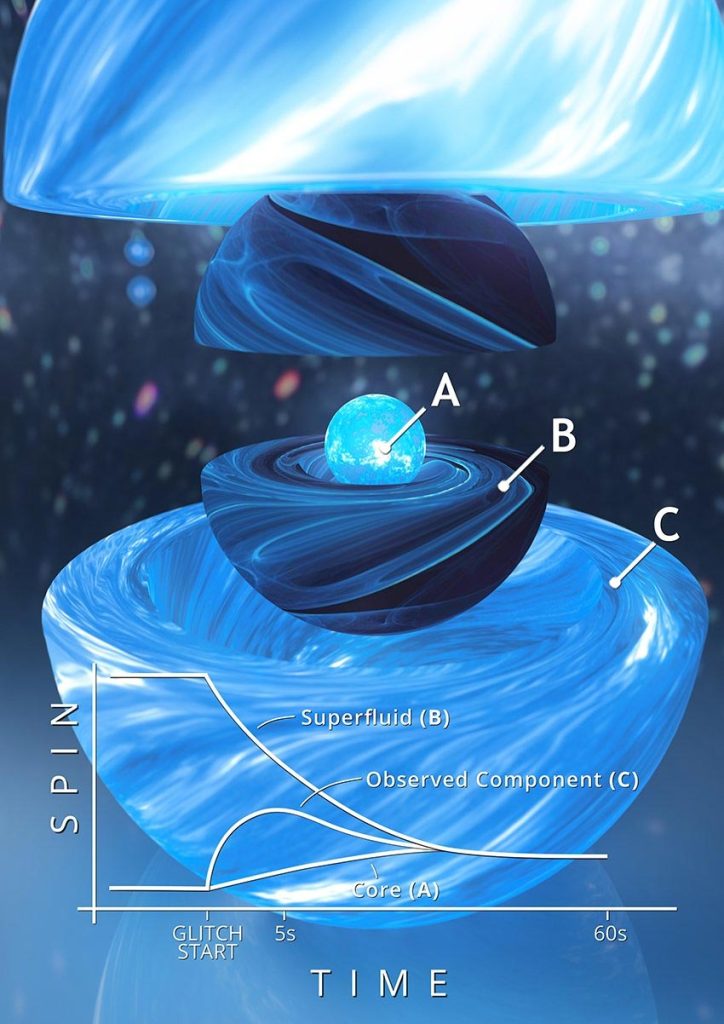
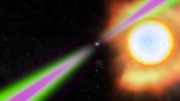
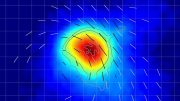
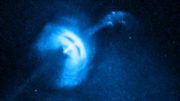
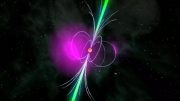
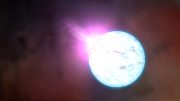
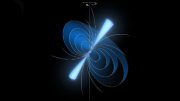
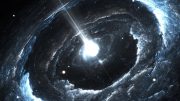
I think it would be of great public interest when reports, such as this are published, that there be a focus of what it means to the people in general. What is the purpose and value of the knowledge? We read these reports and are interested in science and wish to understand more of what we are reading. I’d like to know — “This why we do it, what it means and how that information can be useful”.
Well much of science is not done for immediate reasons, especially astronomy, the result(s) can be useful in the future or maybe they cannot (we do not know in the present). That is how we obtain new information (in this case, astro-physics). If you are unable to understand this simple fact of science you should re-evaluate your values. One of the uses of astro-physics ‘rules’ is the further understanding of the space we live in, not just the meaningless lives we live on the blue marble.
Neutron Star: “I’m the most dense object in the universe!”
Black Hole: “Hold my beer…”
Your article states that Neutron stars are the most dense objects in the universe.– How do you know that? Do you know the density of the core of a black hole?
Strange Stars are more dense than Neutron Stars. Strange Stars are a type of Quark Star made up of a mix of Neutrons and Strange Quarks. You get Strange Quarks when the Gluon Field is crushed. And then come’s the Graviton Star. That’s the Center of a Black Hole at the Planck Scale which is last step before the Singularity. The Singularity is the last step that happens after the Gravitons and the gravity field are crushed and when Gravity and mass stop. Then ….. BANG. we start all over.
“Occasionally these neutron stars start to spin faster, caused by portions of the inside of the star moving outwards.”
Uhhhh, no… It’s the other way around. It spins faster as stuff on the outside moves INWARD. Conservation of angular momentum, anyone??
There’s a word for “most dense,” ~ it’s ‘densest.’
Firstly, I’m suspicious of an article when the English is wrong, and secondly, a black hole is denser than a neutron star or it would BE a neutron star.
I think in the future we will discover that neutron , electron etc. can be crushed into smaller and more dense components. this hypothesis justify the bing bang.